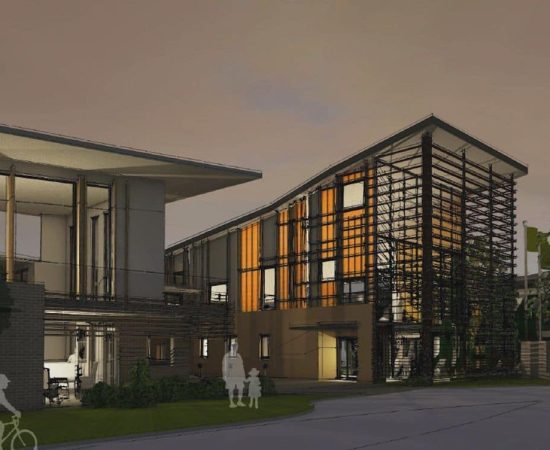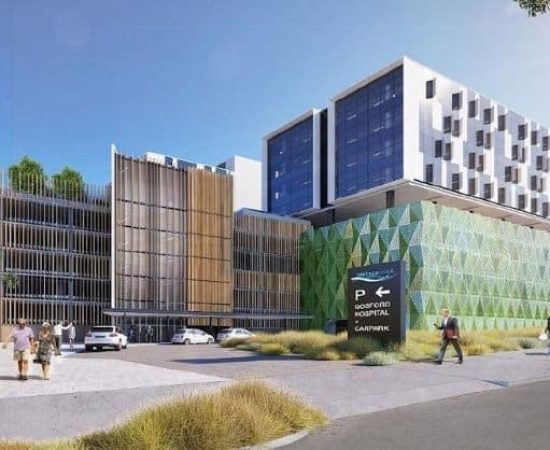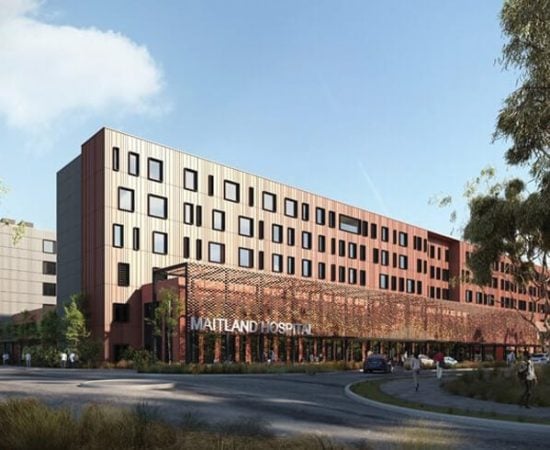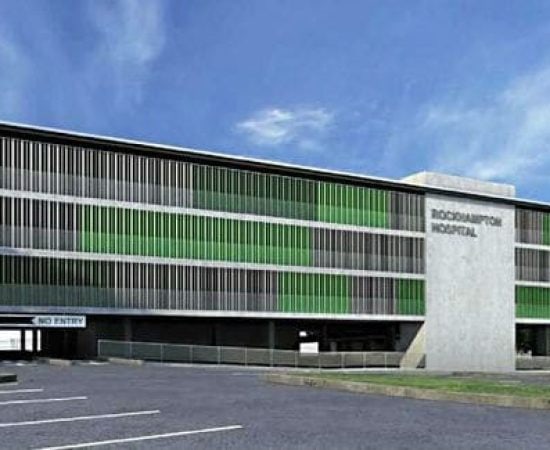Concrete causing grief for your floor coverings?
There are two key issues for concrete floor slabs under flooring at health and aged care facilities.
The first relates to the moisture content of the slab. Moisture and vapour can rise out of the slab and causing bubbling and delamination of the flooring, or dissolve the adhesive.
The second challenge is longer term. The slab needs to be protected against contaminants such bio-fluids (urine, blood, etc) or chemicals. These fluids can enter the porosity of the slab, sometimes causing odours which cannot be removed; and in some cases causing degeneration of the concrete itself.
Concrete moisture control under flooring.
Concrete dries at the rate of 25mm per month. This is not only from the time of pour, but from the time the concrete was last wet, e.g. if it has been exposed to rainy weather during construction.
This means the concrete may still have a high moisture content at the time of installing floor coverings. This in turn can lead to delamination, bubbling, or failure of the adhesive.
MARKHAM’s solution for this challenge is to block the porosity of the concrete, immobilising the moisture. It is important to understand that the moisture is not removed, but it cannot move about and cause issues under the flooring.
Moisture control under direct-stick flooring
MARKHAM offers the FLOOR-TECT® system, which complies with AS1884:2021 when installed in full with primer, by a qualified applicator.
AQURON 2000 immobilises moisture within concrete, and has been successfully used for many years to prevent moisture issues under floor coverings.
AQURON 2000 MEDI+ has been specifically designed to meet the needs of aged care and healthcare floors. In addition to providing moisture control, AQURON 2000 MEDI+ protects against bio-fluid and chemical ingress.
Protect against contamination.
Floor slabs in health and aged care facilities, aged care, healthcare, animal housing, or laboratories, are at risk of contamination from bio-fluids and chemicals. Once these enter the concrete they cannot be removed without destroying the slab.
Permanently protect the floor slab from bio-hazards.
Bio-hazard protection for floor slabs
CONQOR MEDIGUARD is a spray-applied hydrogel treatment for concrete, designed specifically to protect against bio-fluids and chemical ingress. Arrests the movement of moisture into, out of, and through the concrete. This provides protection against moisture issues under direct-stick flooring, and prevents the ingress of bio-fluids and other contaminants.
Recomended Solutions
Backed by years of use in the field, these systems have consistently delivered reliable performance in demanding conditions. Each solution supports long-term durability and addresses the specific challenges of the sector.
Health & Aged Care – RH Moisture Control Project Showcase
Explore our proven track record in enhancing concrete durability of health and aged care Infrastructure
The Markham Experience.
At MARKHAM, we offer a range of advanced solutions and technical support to enhance the durability and lifespan of concrete structures.
Technical Backup.
Our expert team provides technical backup, ensuring quality assurance and offering warranties for our solutions.
QA Process.
Our solutions are designed to address specific challenges and provide effective solutions.
Performance Based Warranties.
Our expert team provides technical backup, ensuring quality assurance and offering warranties for our solutions.
NEED MORE
PRODUCT INFO?
All the details you need – download a PDF copy of the product information sheet.
Do you have a project to quote?
Or need some help specifying our products? Let us know the details of your next project and we’ll get in touch.
Just want to do it yourself?
We offer self-apply product options along with guides and technical support, so you can get the job done right even without using our applicator team.
Whether you’re a contractor or managing a project in-house, we’ll help ensure the best possible outcome.
FAQs.
Find answers to commonly asked questions on enhancing concrete durability for health and aged care infrastructure.
What is the FLOOR-TECT system?
The FLOOR-TECT® system is MARKHAM’s solution for blocking concrete porosity and immobilising moisture in floor slabs. It complies with AS1884:2021 when installed by a qualified applicator and provides permanent protection against contamination from bio-fluids and chemicals.
How does hydrogel treatment work to control concrete moisture?
Hydrogel treatment, such as CONQOR PROTECT, works by blocking the porosity of the concrete. This immobilises moisture within the concrete, preventing it from moving and causing issues like delamination or bubbling under flooring. The moisture is not removed, but its movement is effectively prevented.
Can MARKHAM's solutions be used in both new construction and existing structures?
Yes, MARKHAM’s solutions can be used to protect concrete from day one in new construction projects, as well as to extend the service life of aging structures. They offer protection against corrosion, water migration, carbonation, and other damaging factors.
What types of facilities can benefit from these concrete protection solutions?
These solutions are particularly beneficial for facilities in the health and aged care sector, including hospitals, nursing homes, and clinics. They’re also useful for animal housing facilities, laboratories, and any other structures where concrete floors may be exposed to bio-fluids or chemicals.
How long does concrete typically take to dry?
Concrete typically dries at a rate of about 25mm per month. However, this is not only from the time of pour but from the last time the concrete was wet, such as exposure to rain during construction. This means concrete may still have high moisture content when it’s time to install floor coverings.









